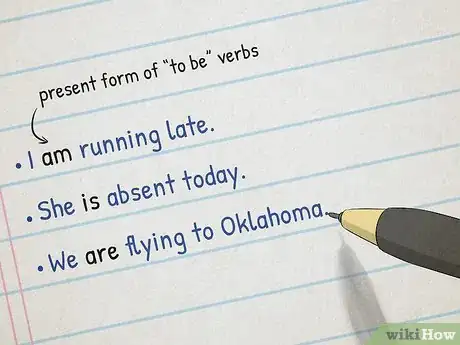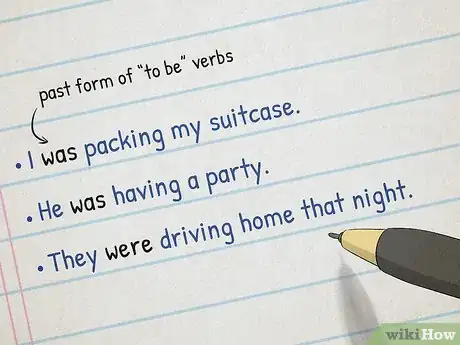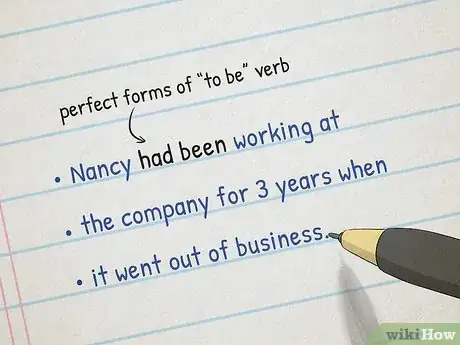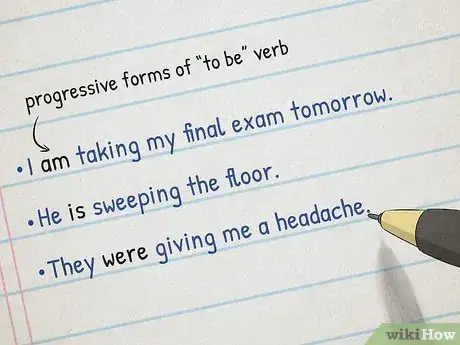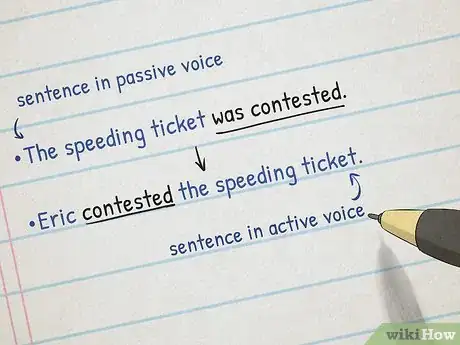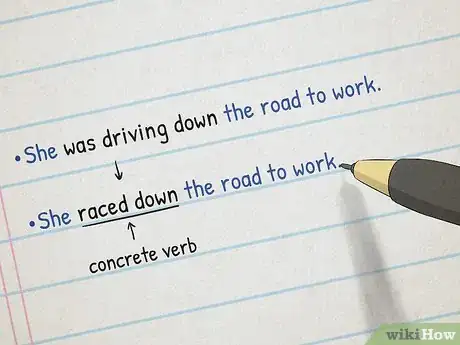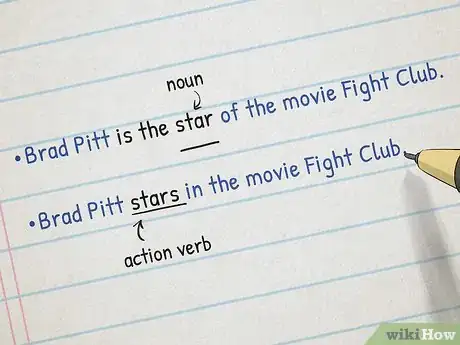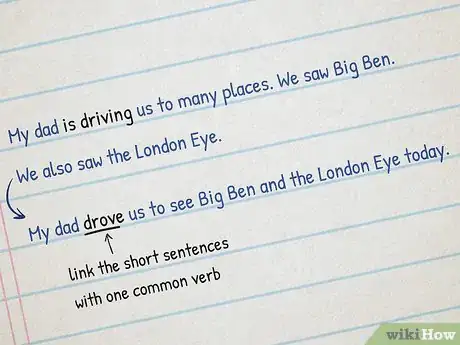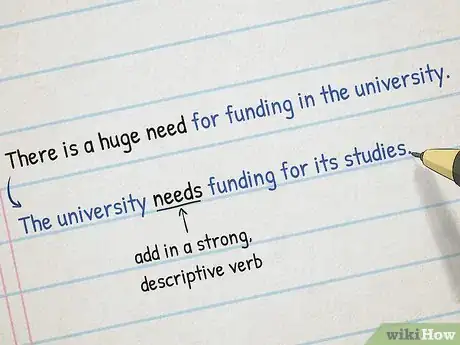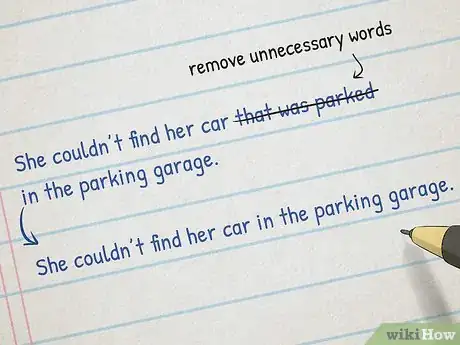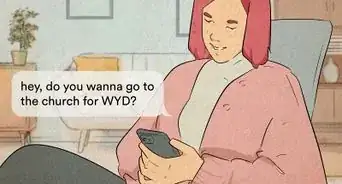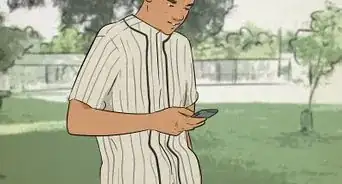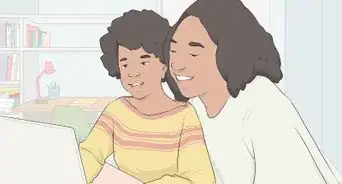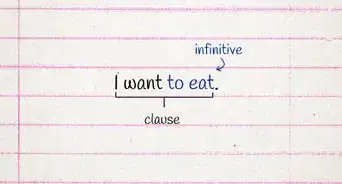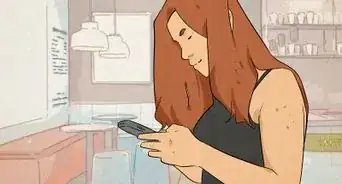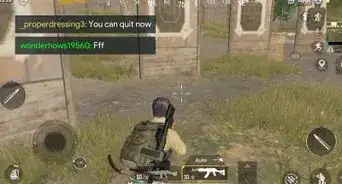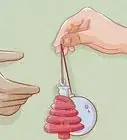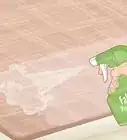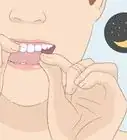This article was co-authored by Richard Perkins and by wikiHow staff writer, Hannah Madden. Richard Perkins is a Writing Coach, Academic English Coordinator, and the Founder of PLC Learning Center. With over 24 years of education experience, he gives teachers tools to teach writing to students and works with elementary to university level students to become proficient, confident writers. Richard is a fellow at the National Writing Project. As a teacher leader and consultant at California State University Long Beach's Global Education Project, Mr. Perkins creates and presents teacher workshops that integrate the U.N.'s 17 Sustainable Development Goals in the K-12 curriculum. He holds a BA in Communications and TV from The University of Southern California and an MEd from California State University Dominguez Hills.
This article has been viewed 11,256 times.
The verb “to be” takes on many forms and is often used in writing to describe actions in the past or present. Although “to be” verbs have their place in writing, they can often be replaced with specific, succinct verbs that lead to tighter, cleaner writing. Recognizing “to be” verbs in your own writing is the first step to replacing them and cleaning up your sentences.
Steps
Recognizing “To Be” Verbs
-
1Look for “am,” “is,” and “are” in present forms. In present sentences, the form of “to be” often takes on “am,” “is,” and “are.” This is the most common form of a “to be” verb, and they’re often the easiest to miss. You may see sentences like:[1]
- I am running late.
- She is absent today.
- We are flying to Oklahoma.
-
2Find “was” and “were” in past forms. If you’re describing something that happened in the past, you may use “was” and “were” to describe actions that happened. These words are also fairly common, and they’re easy to miss. Examples include:[2]
- I was packing my suitcase.
- He was having a party.
- They were driving home that night.
Advertisement -
3Look for “had been” and “has been” for perfect forms. A perfect verb form describes an action that’s already been completed. In sentences that use “to be,” you may see “had been” or “has been” to describe actions in the past. Examples include:[3]
- I had been studying for my test when the doorbell rang.
- Nancy had been working at the company for 3 years when it went out of business.
- They had been talking for an hour before James arrived.
-
4Find “am,” “is,” “are,” and “was/were being" for progressive forms. The progressive verb form shows an action that is still ongoing at the time of your description. When you use the verb “to be,” you’ll often see a sentence with “am,” “is,” or “are” in it; these sentences are different from present tense sentences because they describe ongoing actions. You may see sentences like:[4]
- I am taking my final exam tomorrow.
- He is sweeping the floor.
- They were giving me a headache.
Choosing Specific Verbs
-
1Write in active voice, not passive voice. One of the easiest ways to cut out “to be” verbs in your writing is to stick with active voice. Active voice is specific about both the action and who the action is happening to, while passive voice leaves the recipient ambiguous. Try to change all of your passive sentences to active ones to easily get rid of the verb “to be.”[5] [6]
- An example of passive voice is: “The speeding ticket was contested.”
- Change that sentence to active voice by saying: “Eric contested the speeding ticket.”
- Another example of passive voice is: “The dinner was eaten.”
- You can change that to active voice by saying: “The family ate their dinner.”
-
2Use a stronger, more specific verb. Oftentimes, “to be” verbs are weak and slightly wordy. Try to find actionable, concrete verbs that describe how the action is being performed, rather than vague verbs that don’t describe much.[7] [8]
- For example, take the sentence: “My mom is loud when she tells us to do our homework.”
- Replace the “to be” verb to make: “My mom bellows when she tells us to do our homework.”
- Or, take the sentence, “She was driving down the road to work.”
- Replace the “to be” verb to make: “She raced down the road to work.”
- Try keeping a notebook with a list of exciting, unique verbs you can look at if you get stuck.[9]
-
3Change a noun in the sentence to a verb. If you have more than one noun in a sentence, see if you can change one of them to a verb for a more specific action. This can also cut down on the amount of words in your sentence to avoid unnecessary length. For example:[10]
- ”His mother was the driver of the bus.”
- Change that to: ”His mother drove the bus.”
- Or, “Brad Pitt is the star of the movie Fight Club.”
- Change that to, “Brad Pitt stars in the movie Fight Club.”
-
4Combine short sentences to avoid “to be” verbs. Short, choppy sentences can often be combined to eliminate “to be” verbs and improve the flow of your text. If you notice 2 or more short sentences next to each other, try combining them by linking them with one common verb.[11]
- For example, “The food at the restaurant is excellent. The hamburgers are juicy. The onion rings are crispy. The pie is the best I have ever eaten.”
- Change those sentences to: “The restaurant serves excellent food, including juicy hamburgers, crispy onion rings, and the best pie I have ever eaten.”
- Or, “My dad is driving us to many places. We saw Big Ben. We also saw the London Eye.”
- Combine those sentences to make: “My dad drove us to see Big Ben and the London Eye today.”
-
5Eliminate “there/this” in your sentence. The words “there” and “this” can often clutter up your sentence, especially when they’re combined with “are,” “is,” or “were.” Often, you can take them out completely by combining your sentences and adding in a strong, descriptive verb instead.[12]
- For example, “There were some important findings resulting from my research study.”
- Eliminate “there were” to get: “My research study resulted in some important findings.”
- Or, “There is a huge need for funding in the university.”
- You can change that to, “The university needs funding for its studies.”
-
6Cut out unnecessary words. Sometimes, there are words in your sentences that just don’t need to be there. Cutting out these words can help you eliminate “to be” verbs without changing the entire structure of the sentence. For example:[13]
- ”He struggled with the paper that was assigned by the professor.”
- You can change that to, “He struggled with the paper assigned by the professor.”
- Or, “She couldn’t find her car that was parked in the parking garage.”
- You can change that to, “She couldn’t find her car in the parking garage.”
References
- ↑ https://stlcc.edu/docs/student-support/academic-support/college-writing-center/to-be-verbs.pdf
- ↑ https://stlcc.edu/docs/student-support/academic-support/college-writing-center/to-be-verbs.pdf
- ↑ http://www.cws.illinois.edu/workshop/writers/perfectforms/#:~:text=The%20perfect%20form%20is%20the,had%22%20%2B%20the%20past%20participle.
- ↑ https://stlcc.edu/docs/student-support/academic-support/college-writing-center/to-be-verbs.pdf
- ↑ Richard Perkins. Writing Coach & Academic English Coordinator. Expert Interview. 1 September 2021.
- ↑ https://www.blinn.edu/writing-centers/pdfs/Reducing-the-BE-verb.pdf
- ↑ Richard Perkins. Writing Coach & Academic English Coordinator. Expert Interview. 1 September 2021.
- ↑ https://stlcc.edu/docs/student-support/academic-support/college-writing-center/to-be-verbs.pdf
- ↑ Richard Perkins. Writing Coach & Academic English Coordinator. Expert Interview. 1 September 2021.
- ↑ https://stlcc.edu/docs/student-support/academic-support/college-writing-center/to-be-verbs.pdf
- ↑ https://www.blinn.edu/writing-centers/pdfs/Reducing-the-BE-verb.pdf
- ↑ https://stlcc.edu/docs/student-support/academic-support/college-writing-center/to-be-verbs.pdf
- ↑ https://stlcc.edu/docs/student-support/academic-support/college-writing-center/to-be-verbs.pdf
